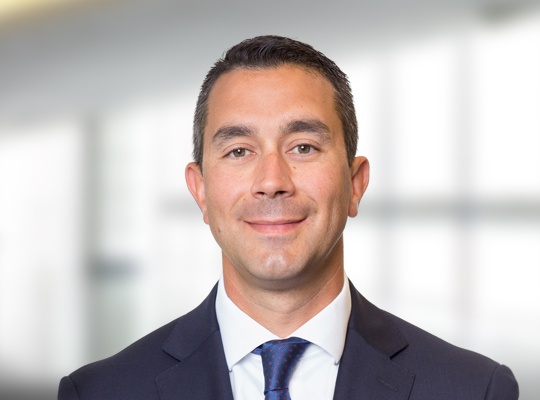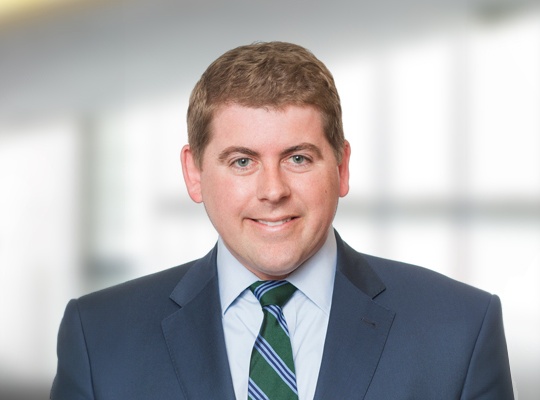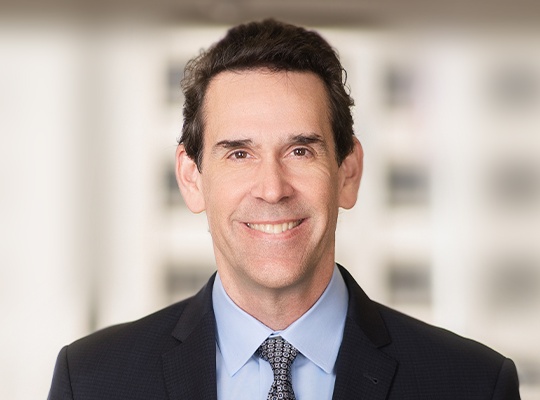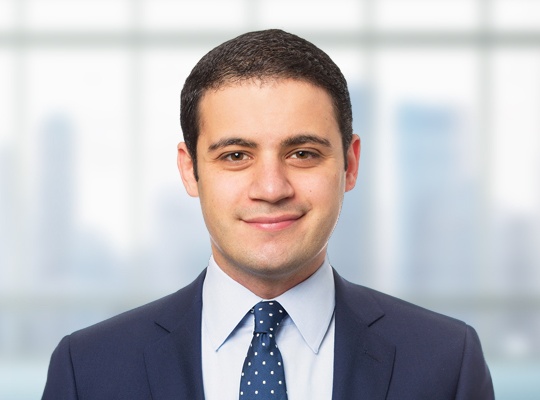The Supreme Court Affirms, But Limits, The SEC’s Disgorgement Authority
Key Takeaways
- Supreme Court upholds SEC’s power to seek disgorgement, but placed new guardrails on that power.
- Disgorgement awards should (1) be for the benefit of victims harmed by the misconduct; (2) not be based on joint-and-several liability; and (3) exclude any “legitimate expenses.”
- Disgorgement awards remain subject to the five-year statute of limitations established in Kokesh v. SEC.
The Supreme Court issued its Opinion in Liu v. SEC1 on June 22, 2020, confirming but curtailing the Securities and Exchange Commission’s power to seek and obtain disgorgement. In recent years, the SEC has consistently obtained billions of dollars in disgorgement awards from respondents through its enforcement actions – US$ 3.02 billion in 2015, US$2.81 billion in 2016, US$2.96 billion in 2017, US$2.51 billion in 2018, and a record-setting US$3.25 billion in 2019.2 The SEC’s power to obtain disgorgement awards has historically stemmed from the SEC’s power to seek “any equitable relief that may be appropriate or necessary for the benefit of investors” upon any civil action brought by the SEC.3
The question presented to the Supreme Court in Liu was “whether, and to what extent, the SEC may seek ‘disgorgement’ in the first instance through its power to award ‘equitable relief’ under 15 U.S.C. § 78u(d)(5), a power that historically excludes punitive sanctions.”4 The Court ruled, in an 8-to-1 majority opinion – authored by Justice Sotomayor and with Justice Thomas dissenting – that disgorgement can be equitable relief, but only if the award “does not exceed a wrongdoer’s net profits and is awarded for victims.”5
Background
In May of 2016, the SEC brought an action against Charles Liu (Liu) and Xin (Lisa) Wang (Wang) (collectively, Petitioners), a married couple and business partners, claiming that the couple had fraudulently misappropriated nearly US$27 million from their investors, who believed they might receive U.S. visas through the EB-5 program after having purchased a “membership” to assist with the construction of a cancer treatment center in California.6 However, the SEC’s investigation allegedly revealed that Liu had diverted a significant portion of the invested funds to “personal accounts and to a company under Wang’s control,” and “only a fraction” of the investments were put toward legitimate business expenses, including “a lease, property improvements, and a proton-therapy machine for cancer treatment.”7
The district court, in April of 2017, ordered the Petitioners to pay a disgorgement award “equal to the full amount the Petitioners had raised from investors, less the $234,899 that remained in the corporate accounts for the project” - an award of nearly US$27 million.8 Although the Petitioners had argued that the disgorgement award “failed to account for their business expenses,” the district court ruled that the award was a “reasonable approximation of the profits causally connected to [their] violation.”9
Shortly after the district court issued its ruling, the Supreme Court held, in Kokesh v. SEC,10 that “[d]isgorgement in the securities-enforcement context is a ‘penalty’ within the meaning of [28 U. S. C.] §2462, and so disgorgement actions must be commenced within five years of the date the claim accrues.”11 However, the Supreme Court expressly declined to rule on “whether courts possess authority to order disgorgement in SEC enforcement proceedings or on whether courts have properly applied disgorgement principles in this context.”12 The Petitioners thereafter appealed to the Ninth Circuit contending, in light of the ruling in Kokesh, that “disgorgement” is a “penalty,” and therefore the SEC may not seek and obtain disgorgement from a court as “equitable relief” for a securities law violation.13 The Ninth Circuit ruled in favor of the SEC, and Liu and Wang petitioned the Supreme Court.14
In Liu, the Supreme Court upheld the SEC’s authority to obtain disgorgement, but set forth express limitations to the SEC’s power to do so, vacating the original judgment and remanding the matter “for the courts below to ensure the award [is] limited.”15
The Supreme Court’s Decision in Liu and Possible SEC Responses
The Supreme Court, in an opinion penned by Justice Sotomayor, undertook an extensive review of equity jurisprudence to determine what “categories of relief ... were typically available in equity” so as to properly interpret the reference to “equitable relief” in 15 U.S.C. § 78u(d)(5).16 The Court ultimately found that, because “equity courts have routinely deprived wrongdoers of their net profits from unlawful activity,” the same limitations must be placed on any “equitable relief” sought by the SEC.17 In addition, the Court found that such equitable relief historically was to be paid to the wronged victims so as “to avoid transforming an equitable remedy into a punitive sanction.”18 The Court concluded, however, that over time courts have occasionally strayed from these “two principles” and “awarded disgorgement in three main ways that test the bounds of equity practice: by [1] ordering the proceeds of fraud to be deposited in Treasury funds instead of disbursing them to victims, [2] imposing joint-and-several disgorgement liability, and [3] declining to deduct even legitimate expenses from the receipts of fraud.”19
Disgorgement Must Be “For the Benefit of Investors”
Citing to the statutory language in Section 78u(d)(5), the Court stated that equitable remedies sought by the SEC must be “appropriate or necessary for the benefit of investors.”20 In the view of the Court, this “generally requires the SEC to return a defendant’s gains to wronged investors for their benefit.”21 The SEC had contended that “the primary function of depriving wrongdoers of profits is to deny them the fruits of their ill-gotten gains, not to return the funds to victims as a kind of restitution,” and therefore it remained appropriate that disgorgement awards be collected by the U.S. Treasury (Treasury) and not go directly to the victims of the fraud.22 The Court rejected this argument, observing that “the SEC’s equitable, profits-based remedy must do more than simply benefit the public at large by virtue of depriving a wrongdoer of ill-gotten gains,”23 and, further, “the phrase ‘appropriate or necessary for the benefit of investors’ must mean something more than depriving a wrongdoer of his net profits alone.”24
However, the Court did leave open the ultimate question of whether, and to what extent, the SEC’s practice of depositing disgorgement funds with the Treasury nevertheless could still be construed as “for the benefit of investors” consistent with the limitations of Section 78u(d)(5).25 Acknowledging the SEC’s argument that such practice may be justified “where it is infeasible to distribute the collected funds to investors,”26 the Court directed the lower courts on remand to evaluate whether an order directing disgorgement proceeds to the Treasury, to the extent one is entered, would be “for the benefit of investors as required by § 78u(d)(5) and consistent with equitable principles.”27
It has been a well-established practice of the SEC to send disgorgement proceeds to the Treasury, particularly when there are no identifiable victims or the amount to be distributed to victims is de minimis. This part of the Liu decision is likely to have a significant impact on how the SEC staff approaches disgorgement going forward. One result could be more penalty-only enforcement actions, including in Foreign Corrupt Practices Act and insider trading actions. Because the penalty provisions in the Securities Act and in the Exchange Act provide the SEC with flexibility in determining the penalty, including allowing for consideration of the “gross amount of pecuniary gain,”28 the SEC staff also might seek to shift what would have been disgorgement into higher civil penalties.
In cases involving mutual, hedge, and private equity funds, the SEC might be more receptive to distribution of disgorgement proceeds to the fund when it is difficult to find investors, or when the amount to be distributed to any single investor is de minimis. Previously, the SEC staff resisted this practice because it conferred a windfall for those investors who are in the fund at the time of distribution but were not investors when the wrongdoing occurred. Given the Liu decision, the SEC may reconsider its practice and allow disgorgement proceeds to be paid directly to the fund.
No Award of Disgorgement through Joint-and-Several Liability
The Court further found that, absent “concerted wrongdoing,” the SEC’s practice of seeking disgorgement based on joint-and-several liability is “at odds with the common-law rule requiring individual liability for wrongful profits.”29 To ensure that disgorgement remains consistent with other equitable relief and is not transformed into a penalty, the Court restricted disgorgement to the profits accrued by wrongdoers and their partners.
Noting “the wide spectrum of relationships between participants and beneficiaries of unlawful schemes,” the Court did not provide a bright-line rule for what constitutes a partner, as opposed to a mere “affiliate,” for the purposes of disgorgement liability.30 The Court did note that relationships such as “unrelated tipper-tippee arrangements” might be too attenuated of an affiliation to assess disgorgement liability, but, in large part, lower courts will be left to decide how much “flexibility [the SEC has] to impose collective liability.”31 The Court remanded to the lower courts the question of whether the Petitioners should both be held liable as “partners in wrongdoing” or whether individual liability is required.32
Because the Court’s determination regarding joint-and-several liability may limit the SEC’s ability to seek and obtain disgorgement from those who did not obtain “wrongful” profits, future SEC investigations are likely to dedicate more resources to determining: (a) the level of coordination between multiple parties; (b) who, in fact, did profit from the wrongdoing; and (c) in what amount. As result, investigations may involve more document and interview requests and subpoenas regarding, among others things, personal financial information.
“Legitimate Expenses” Must Be Deducted From Disgorgement Awards
The Court further held that legitimate expenses must be deducted before ordering disgorgement.33 To hold otherwise, would be “inconsistent with the ordinary principles and practice of courts of chancery.”34
The Court noted one exception--when the entire profits of a business result from wrongdoing. While the Court left it to the lower courts to determine whether the Petitioners’ expenses were legitimate or wrongful gains “under another name,” the Court did note that the Petitioners’ expenses associated with lease payments and cancer-treatment equipment “arguably have value independent of fueling a fraudulent scheme.”35
Whether to deduct expenses from disgorgement often can be a source of contention during settlement discussions between the SEC staff and defense counsel. The Court, in Liu, has provided settling parties and litigants with greater bargaining power to argue what constitutes a legitimate business expense to reduce the amount of disgorgement requested by the SEC.
Impact on SEC Enforcement
Following on the heels of Kokesh, the Liu decision is another setback for the SEC’s Enforcement Division. It provides parties adverse to the SEC with new arguments to limit the Commission’s most significant source of relief – disgorgement awards. Respondents will use the three limitations set forth by the Supreme Court to argue that disgorgement should either be reduced or eliminated altogether for failure to constitute equitable relief.
The question of how limited disgorgement awards will be going forward will depend on lower courts’ interpretations of the Court’s holding of what constitutes equitable relief. Regardless, Liu presents hurdles for the SEC staff, including the need to (1) take additional investigative steps to figure out how to distribute disgorgement money in a way that benefits investors; (2) probe whether and to what extent “legitimate expenses” should be deducted from the disgorgement; and (3) determine which actors are “partners” subject to joint-and-several liability.
Importantly, the Court did not upset its decision in Kokesh, appearing to leave intact the five-year statute of limitations on disgorgement. Because the Court acknowledged Kokesh, also authored by Justice Sotomayor, in a unanimous decision, and did not call it into question, it remains good law, and parties should expect that disgorgement remains subject to the five-year statute of limitations established in Kokesh.36
Footnotes
1) Liu v. SEC, 591 U. S. ____ (2020).
2) Division of Enforcement: 2019 Annual Report, Securities and Exchange Commission at p. 16.
3) 15 U.S.C. § 78u(d)(5) (emphasis added) (“In any action or proceeding brought or instituted by the Commission under any provision of the securities laws, the Commission may seek, and any Federal court may grant, any equitable relief that may be appropriate or necessary for the benefit of investors”).
4) Liu, 591 U. S. at 1.
5) Id. (emphasis added).
6) Id. at 4.
7) Id.
8) Id. at 5.
9) Id.
10) 581 U.S. ___, 137 S. Ct. 1635 (2017).
11) Kokesh, 137 S. Ct. at 1639. In full, Section 2462 provides that, “[e]xcept as otherwise provided by Act of Congress, an action, suit or proceeding for the enforcement of any civil fine, penalty, or forfeiture, pecuniary or otherwise, shall not be entertained unless commenced within five years from the date when the claim first accrued if, within the same period, the offender or the property is found within the United States in order that proper service may be made thereon.”
12) Kokesh, 137 S. Ct. at 1642 n.3.
13) Liu, 591 U. S. at *1.
14) Id.
15) Id. In Liu, the Supreme Court acknowledged that the Court in Kokesh “determined that disgorgement constitue[s] a ‘penalty’ for purposes of 28 U.S.C. § 2462,” but commented that “the Court did not address whether a §2462 penalty can nevertheless qualify as ‘equitable relief’ under § 78u(d)(5).” Id. at *3.
16) Id. at *12 (quoting Mertens v. Hewitt Assoc., 508 U.S. 248, 256 (1993)).
17) Id. at *6 (emphasis added).
18) Id.
19) Id. at *12.
20) Id. at *15 (quoting 15 U.S.C. § 78u(d)(5)).
21) Id. (emphasis added).
22) Id.
23) Id. at *16.
24) Id. (quoting Parker Drilling Mgmt. Servs, Ltd v. Newton, 587 U.S. ____ (2019)).
25) Id. *16-17.
26) Id. at *16.
27) Id. at *17.
28) 15 U.S.C. § 78u(d)(3).
29) Liu, 591 U. S. at *17 (citing SEC v. Contorinis, 743 F.3d 296, 302 (2d Cir. 2014)).
30) Id. at *18.
31) Id.
32) Id.
33) Id. at *18.
34) Id. at *19 (quoting Tilghman v. Proctor, 125 U.S. 136, 145-46 (1888)).
35) Id.
36) See Rodriguez de Quijas v. Shearson/Am. Exp., Inc., 490 U.S. 477, 484 (1989) (finding that courts “should follow the case which directly controls, leaving to [the Supreme] Court the prerogative of overruling its own decisions”).







